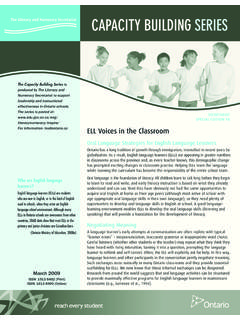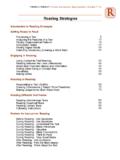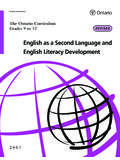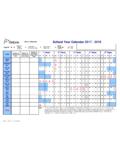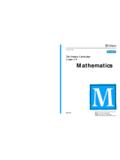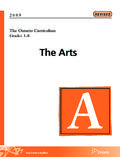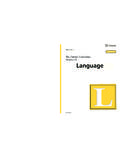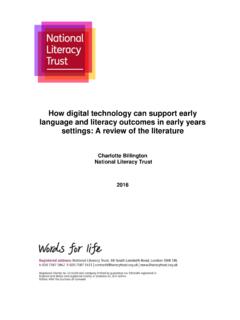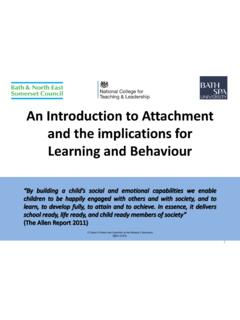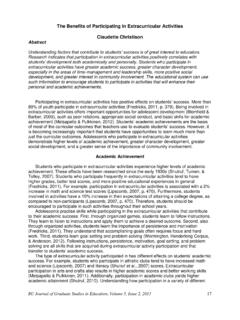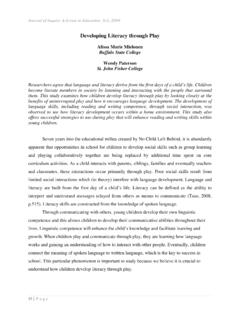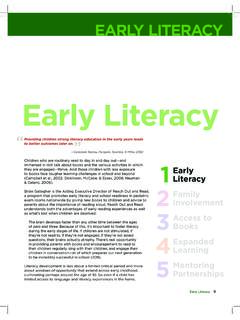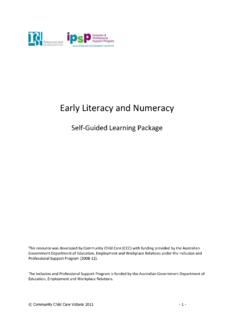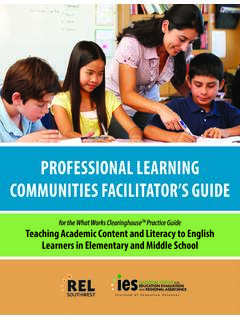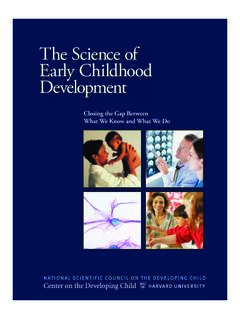Transcription of Capacity Building Series
1 CapacityBuilding SeriesSPECIAL EDITION #27 The Third TeacherDesigning the Learning Environment for Mathematics and Literacy, K to 8 Imagine the ideal learning environment for today s learner. What would it look like? Think about how much the world has changed in the last three decades and how rapidly it will continue to change in the years to come. How do we ensure that the instruction we provide is responsive to the shifting demands of the 21st century?Researchers and practitioners in a wide range of disciplines early childhood and developmental education, psychology and cognitive science, school architecture and design maintain that the key to learning in today s world is not just the physical space we provide for students but the social space as well (Fraser, 2012; Helm et al.)
2 , 2007; OWP/P Architects et al., 2010). The learning environment, they suggest, is the third teacher that can either enhance the kind of learning that optimizes our students potential to respond creatively and meaningfully to future challenges or detract from it. Susan Fraser, for example, writes: A classroom that is functioning successfully as a third teacher will be respon-sive to the children s interests, provide opportunities for children to make their thinking visible and then foster further learning and engagement.
3 (2012, p. 67) Many futurists highlight the importance of innovation, entrepreneurship and creativity in an age of globalization and rapid technological development; others emphasize the importance of communication skills and critical thinking. All concur that developing high levels of literacy and mathematical proficiency will be foundational for success the focus for this monograph. Thinking about the learning environment .. Look at your learning space with 21st century eyes: Does it work for what we know about learning today, or just for what we know about learning in the past?
4 Sir Ken Robinson The Third Teacher (2010)July 2012 ISSN: 1913 8482 (Print)ISSN: 1913 8490 (Online)The Capacity Building Series is produced by the Student Achievement Division to support leadership and instructional effectiveness in Ontario schools. The Series is posted at: For information: Started with the Physical EnvironmentOVERALL ..It is both an art and a science to design (as opposed to decorate) a learning environment that responds to our ultimate goal as educators to develop independent and rigorous thought.
5 Therefore, if we want to foster discovery and reflection, dialogue and the sharing of ideas, the overall physical environment should include: A large gathering space for whole-group work and discussions, located near whiteboards, easels and/or projector screens. A gathering space for small-group and whole-group discussions where students can see clearly the representations of learning that are posted on boards or screens and hear classmates as they share ideas. Flexible and reconfigurable space for small-group collaborative work and inquiry space must allow for groupings of various sizes, such as pairs, triads and groups of four or more.
6 Desks and tables configured to facilitate discussion by allowing eye contact with peers and teacher, the unencumbered flow of traffic and enough space for students to write collaboratively. Active areas for inquiry, investigation and wonder and quiet areas for thinking and exploring technology all areas need to be accessible to students for communicating and documenting their own learning ( , computers, computer software, tablets, digital cameras and video recorders, document cameras, interactive white boards).
7 Instructional materials organized in such a way as to provide easy selection and access for all students materials may include computer software, educational web sites and applications, found materials, graphic organizers, newspapers and other media, resource texts, MATHEMATICS ..Mathematically literate students demonstrate the Capacity to formulate, employ and interpret mathematics (OECD, 2012, p. 4); they view themselves as mathematicians, knowing that mathematics can be used to understand important issues and to solve meaningful problems, not just in school but in life.
8 By extension, the physical environment for mathematics learning should include: Spaces where students can use manipulatives to solve problems and record their solutions. Board and/or wall space to display student solutions for Math Congress and Bansho student solutions should be easily visible from the group gathering space. Space to post co-created reference charts such as glossary terms and past and current summaries of learning that specifically support the development of the big ideas currently under study.
9 Instructional materials organized in such a way as to provide easy selection and access for all students; may include mathematics manipulatives, calculators and other mathematical tools, mathematical texts, hand-held LITERACY .. Today s literate learners experience a constant stream of ideas and information they need strategies for interpretation and making sense and lots of practice in identifying meaning, bias and perspective (Ontario Ministry of Education, 2009, 2006). By extension, the physical environment for literacy learning should include: Spaces where students can talk, listen, read and place for wonder, mystery and discovery.
10 We need to think about creating classroom environments that give children the opportunity for wonder, mystery and discovery; an environment that speaks to young children s inherent curiosity and innate yearning for exploration is a classroom where children are passionate about learning and love school. (Heard & McDonough, 2009)3 Board and/or wall space for co-constructed documentation, anchor charts, shared writing texts, student-generated inquiry questions, etc. A variety of learning materials that are found and often contributed by students and families themselves along with commercial materials that are relevant to the students learning Central writing storage area with a variety of authors writing and publishing supplies along with reference materials like dictionaries, thesauruses, etc.
